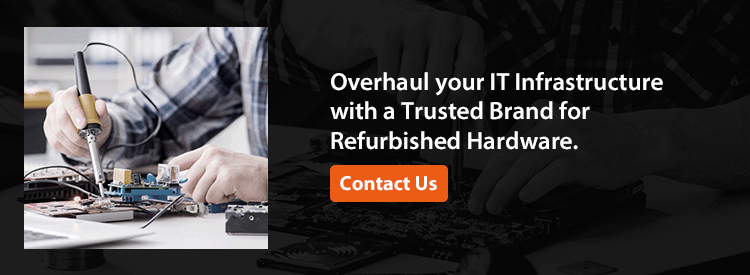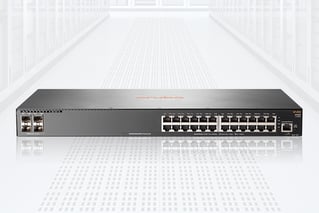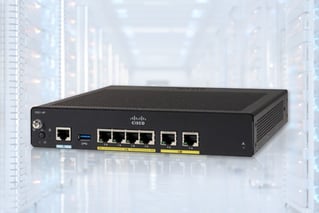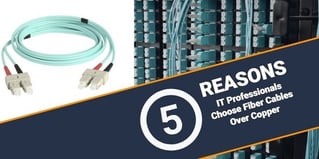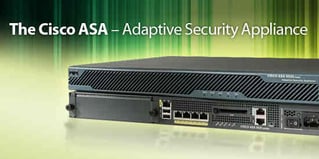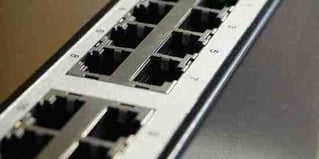When it comes to the maintenance and support of IT hardware (server, storage, network), most enterprises rely on the services...
When it comes to the maintenance and support of IT hardware (server, storage, network), most enterprises rely on the services offered by original equipment manufacturers or OEMs. These hardware maintenance services generally include hardware replacement, on-site technical support, remote assistance, hardware monitoring, and diagnosis of hardware issues. Given that OEMs develop the original product, their hardware support services are often considered a gold standard by many organizations in the hardware support market. However, as companies seek to cut down their IT spending and maximize the overall return on investment, several caveats concern the desirability of OEM support. These include unnecessary hardware upgrades, hefty post-warranty contract fees, stringent contracts, and poor customer service.
To that end, Third-party maintenance (TPM) services offered by independent third-party vendors are quickly becoming a popular choice over OEM support. Third-party maintenance promises to extend the life of hardware declared end-of-life (EOL) or end-of-service-life (EOSL), avoid forced asset replacement, and optimize the overall IT budget. Additionally, TPM support covers many other benefits not included under OEM support. Let's take a detailed look at some of the challenges associated with OEM support.
OEM Support Challenges Faced by Organizations
Outlined below are some of the common challenges that organizations face with OEM support once their IT hardware reaches end-of-life (EOL):
- High Maintenance Cost: OEMs drastically surge the maintenance and support costs for hardware declared EOL or EOSL. They further suggest customers opt for technology refresh and purchase new hardware instead of extending the asset's life. This constant need to purchase and maintain new hardware poses a significant challenge for organizations regarding overall CapEx and OpEx costs, especially considering the budget limitations in the IT department.
- Strict Contracts: OEMs don't offer their customers the liberty to customize the support contracts as per their price preference and business requirements. This inflexible approach forces companies to pay for unnecessary services and leaves them limited control over IT infrastructure maintenance.
- Poor Service: OEMs primarily focus on developing and selling new hardware. It is one of the reasons why they don't prioritize the hardware-related issues faced by their customers. Organizations face a delay in troubleshooting hardware issues, making the entire support process highly time-consuming and frustrating.
- Unnecessary Hardware Upgrades: OEMs declare hardware as end-of-life (EOL) earlier than anticipated, even if the hardware assets operate smoothly. Instead, they encourage organizations to replace the aged hardware. If the companies choose to continue with their legacy hardware, they risk paying a costly maintenance fee or even losing OEM support. This prevents companies from unleashing maximum value from their hardware and leads to irrelevant upgrades.
- Multiple Complex Contracts: Companies commonly purchase IT assets from various OEMs and deal with numerous contracts. Managing different agreements and collaborating with multiple service providers to discuss policies, renewal dates, length of service, etc., can be complicated and confusing. It requires additional time, effort, resources, and complex paperwork.
Key Benefits of Switching to Third-Party Maintenance (TPM)
Third-party maintenance (TPM) service providers a slew of additional and out-of-the-box benefits, including customizable contracts, well-trained engineers for technical assistance, sustainability, etc. Following are some good reasons why companies should make the switch to TPM services:
- Affordable Maintenance: One of the significant benefits of TPM is that it offers the same quality of service as OEMs at a low price. As a result, companies can maintain their legacy hardware while optimizing their overall IT costs. This allows companies to better allocate their budget on other important innovations and business areas.
- Customized & Consolidated Contracts: With TPM services, organizations can benefit from tailor-made and flexible service level agreements (SLAs) based on their specific business and budget needs. It prevents companies from paying for services they don't need. Additionally, the TPM vendor acts as a single point of contact when addressing a company's hardware support needs. There's no need to deal with multiple contracts, making the process efficient and straightforward.
- Maximum Hardware Value: IT assets can last much longer than the claims made by OEMs. They can operate smoothly even beyond their EOL or EOSL date with proper care, support, and maintenance. Companies can maximize the total ROI on their legacy hardware and continue to support it by leveraging the wide range of services offered by TPM providers.
- Sustainability: OEMs commonly recommend getting rid of EOL hardware and investing in a new one. However, the ever-increasing hardware production and improper disposition have become detrimental to our environment. As TPM focuses on extending the life of IT hardware, it avoids the need for unnecessary asset disposition, thereby making it a sustainable choice.
- Speedy Customer Service: TPM providers have a team of well-trained and brand-agnostic engineers onboard that are well-equipped to handle after-warranty, EOL, and other hardware issues. They offer personal attention to customers to ensure the problem gets resolved quickly.
How Is CXtec Helping Companies Gain Maximum Value From IT Hardware?
To ensure the smooth performance of legacy hardware and save on hefty maintenance costs, companies need a TPM service vendor with demonstrated experience in the IT hardware maintenance and support market. CXtec has a prosperous 40 years of experience in the industry and offers world-class yet cost-effective services to its customers. With its third-party maintenance solution RapidCare®, CXtec helps organizations create the right and robust maintenance strategy that takes care of their unique business needs without compromising hardware performance.
By leveraging RapidCare, customers can benefit from faster 24x7 hardware support, a 60% reduction in IT costs, extended hardware lifecycle, customized contracts, brand-agnostic on-site engineers, hardware replacement, and multiple service level options. With RapidCare customers get similar superior support OEMs offer, years of brand expertise, and maximum return on their capital investment.
Simplify the maintenance of IT infrastructure with CXtec. For more information, contact us today: info@cxtec.com
Recent Posts
The digital age demands higher connectivity and...
In the fast-paced business world, companies...
What is an SLA?
At its core, a service level...
Posts by Tag
- Server (18)
- Maintenance (17)
- Refurbished (15)
- IT Hardware (11)
- Switches (11)
- cisco (10)
- it assets (10)
- Refurbished Servers (8)
- Sustainability (8)
- Dell Server (7)
- hardware (7)
- Dell Equipment (5)
- IT Infrastructure (5)
- ITAD (5)
- network (5)
- Avaya (4)
- Hardware Failures (4)
- data center (4)
- microchip shortage (4)
- storage (4)
- supply chain (4)
- Cabling (3)
- E-Waste (3)
- HP (3)
- IT (3)
- IT Equipment (3)
- esg (3)
- Avaya Phones (2)
- HP switch (2)
- Hardware Security (2)
- IP Phones (2)
- NETWORKING (2)
- Server Maintenance (2)
- cisco router (2)
- decommissioning (2)
- factory reset (2)
- ucs (2)
- used cisco hardware (2)
- ACP (1)
- AP (1)
- Access Points (1)
- Aruba (1)
- Avay 9620 (1)
- Avaya 1608 (1)
- Avaya 4600 Series (1)
- Avaya 9600 Series (1)
- Avaya 9608 (1)
- Avaya DHCP (1)
- Brocade (1)
- Carbon Offsetting (1)
- Data Security (1)
- Fiber Optic Cables (1)
- Fiber Optic Cabling (1)
- Hybrid (1)
- IT Contributes (1)
- IT Network (1)
- IT Procurement Services (1)
- IT Vendor (1)
- POE (1)
- R2v3 (1)
- SLAs (1)
- Safeguard (1)
- Used Network Equipment (1)
- data destruction (1)
- strategy (1)
- urban mining (1)
- used cisco (1)
Popular Posts
When you are building a network that requires...
In efforts to provide an array of valuable...
When it comes to technology in our daily lives...


